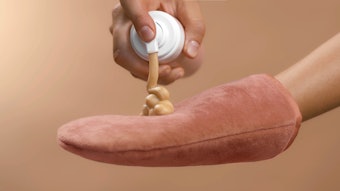
Here’s a scary fact: one-in-five Americans will develop skin cancer in the course of a lifetime.1 Coming from a family of five, this fact hits me hard.
I recently read that the U.S. Food and Drug Administration (FDA) proposed outlawing tanning bed usage for those under 18. A step in the right direction, but my excitement wanes, as the FDA is still sitting on the approval of eight sunscreen actives that could improve U.S. sunscreen efficacy. Of those eight pending actives, some could offer better UVA protection, which research has shown leads to the development of skin cancer. Regulatory bodies tend to move at a glacial pace, so while we are waiting, let’s take better sun protection into our own hands.
 This issue of Skin Inc. is getting serious about a better understanding of sun protection and improved sun safety measures. For starters, Farah Ahmed and Curtis Cole break down the anatomy of a sunscreen, detailing the essential components of a sunscreen and how they work. This information can bolster estheticians’ sun care knowledge to help them choose better sunscreens for themselves and recommend appropriate sunscreens for their clients.
This issue of Skin Inc. is getting serious about a better understanding of sun protection and improved sun safety measures. For starters, Farah Ahmed and Curtis Cole break down the anatomy of a sunscreen, detailing the essential components of a sunscreen and how they work. This information can bolster estheticians’ sun care knowledge to help them choose better sunscreens for themselves and recommend appropriate sunscreens for their clients.Jaclyn Strausser also discusses sun care, noting that just wearing sunscreen might not be enough, as skin cancer rates continue to rise. She explains that current sunscreens often do not provide enough UVA protection, adding how skin care professionals can select effective sun care. She also recommends taking additional measures, such as incorporating an antioxidant product into a regimen as well as wearing sun-protective clothing—a hat and sunglasses—when exposed to UV radiation.
Some sun exposure is said to be good for vitamin D production, and Cynthia Malcom addresses obtaining vitamin D safely in her article. Sublingual supplementation might provide the best absorption; however, vitamin D requirements vary by size, and too much of the “sunshine vitamin” can lead to health problems. The right amount of vitamin D can reduce depression, help lessen certain diseases and even improve some skin conditions.
Are you on board with better sun protection? I certainly hope so.
If you’re also still wondering about those eight pending sunscreen filters, follow the Sunscreen Innovation Act, a law dedicated toward clearing the backlog of sunscreen actives and providing transparent and time-sensitive approval of these ingredients in the future. As of February 2015, the FDA deferred to the manufacturers of all eight actives, requesting more information before stamping them generally recognized as safe and effective (GRASE). Want to do more? Contact the FDA: 855-543-3784, 301-796-3400 or [email protected].
REFERENCES
(Accessed Feb 5, 2016)
Yours in education,

Katie Anderson
Managing Editor










